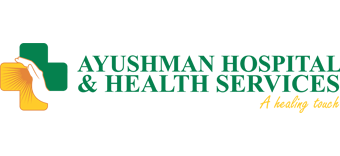Molluscum Contagiosum Removal – Advanced Care at Ayushman Hospital
This skin disease appears as a viral infection which presents small, raised flesh or white colored lumps on top. Although usually harmless, this skin disease can be contagious as it spread via skin contact or even infected surfaces. At Ayushman Hospital, we guarantee safe and effective methods for molluscum contagious removal to ensure minimal pain with optimal results.
What is Molluscum Contagiosum?
Molluscum Contagiosum is a disease that is caused by the viral infection referred to as Molluscum contagiosum virus (MCV). The lumps appear as smooth circular edges that are painless for touch and often have a pinpoint depression in the center. Depending on the person, these lesions may arise on their face, arms, neck, legs, and even on genitalia.
Children, people who have a weakened immune system or suffer from eczema are most likely to catch this infection. Even though some cases are clear on its own, others can remain for prolonged periods which need medical attention to guarantee no further issues arise.
How Does Molluscum Spread?
- Direct skin contact with an infected person.
- Touching towels, razors, sports equipment, or any item an infection was spread onto.
- Picking or scratching lesions which causes them to spread further.
- Sexual contact, especially when molluscum is found around the private parts.
- Molluscum Removal Treatments Ayushman Hospital
Here at Ayushman Hospital, we offer the most advanced treatment options for dermatology that ensure the safe and effective removal of molluscum lesions. The number and placement of the bumps, along with the patient’s skin type, will determine the treatment a dermatologist recommends:
- Cryotherapy
The most painless and least invasive form of molluscum bumps removal would be through cryotherapy. This would involve freezing the bumps with liquid nitrogen wherein the lesions blister and come off within a few days. The approximate recovery time for this procedure is none at all for the majority of patients.
- Curettage
The doctor uses a scoop-shaped tool to remove the bump which can be performed with minimal discomfort under some local anesthetics. This works exceptionally well for larger, more stubborn lesions.
- Laser Therapy
Laser therapy is a great choice for patients who have multiple or persistent molluscum lesions. With the laser, the infected tissue is destroyed while the surrounding skin is minimally affected. This technique is ideal for sensitive areas such as the face or genitals.
- Topical Medications
For mild cases, prescription creams or antiviral ointments will be needed. They gradually shrink the lesions while stopping the virus from spreading. Some of the more common topical treatments are:
- Imiquimod cream – It works by stimulating the immune system to fight the virus.
- Cantharidin (“Blister Beetle” extract) – Treatment is done by a doctor to create blisters that help to remove lesions.
Electrocautery (Burning Method)
Sometimes electrocautery is used to blast molluscum bumps off a person’s body by applying a controlled electric current. This method works greatly, though local anesthetics may be needed for comfort’s sake.
Why Choose Ayushman Hospital for Molluscum Removal?
We provide advanced skin treatments at Ayushman Hospital under the care of specialized dermatologists. Our patients trust us with molluscum removal for the following reasons:
- Expert Dermatologists – All of our specialists have great experience with viral skin infections, so rest easily.
- State-of-the-Art Technology – We have all the newest tools, including laser and cryotherapy and the newest advances in electrocautery assuring the most accurate and simple removal.
- Painless & Safe Procedures – Most treatments require low to no recovery time and are very non-invasive.
- Personalized Treatment Plans – We identify the skin issue you have and advise the best course of action for you to recuperate in the shortest time possible.
- Strict Hygiene & Safety Standards – The procedures are done in a clean environment to avoid recontamination and for the patients’ overall safety.
Care After Treatment & Prophylaxis
Patients are advised to:
- Keep the area dry and clean for optimal recovery.
- Do not touch or scratch the lesions to reduce spreading.
- Avoid sharing personal items such as towels and razors.
- Use prescribed topical medication to the affected area for favorable skin changes and rapid recovery.
- Return to the dermatologist if new lesions develop.



